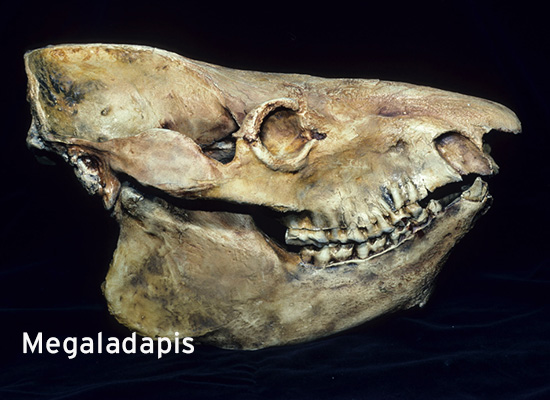Fossil Fridays highlight fossils and subfossils within the collection of the Duke Lemur Center’s Division of Fossil Primates (DFP). The DFP’s 30,000+ specimens constitute the world’s largest and most important collection of early anthropoid primates, and its skeletal specimens of extinct giant lemurs from Madagascar are unmatched anywhere else in the world.
“The Duke Lemur Center combines two unique research collections under one research roof: the living lemurs that help us understand the origins of primate behavior and biology, and an extensive collection of fossils essential for understanding the evolution of lemurs and our direct primate relatives,” says Matt Borths, Curator of the DFP. “The fossils housed at the DFP are essential for helping us understand what it means to be a primate. The more researchers can utilize them, the more we’ll learn about our primate roots.”
Featured fossils:
April 12, 2019: A baby lemur (Megaladapis) from the DFP
March 28, 2019: Babakotia (extinct sloth-like lemur)
March 22, 2018: Archaeolemur teeth and diet (extinct baboon-sized lemur)
March 15, 2019: Prohylobates (18-million-year-old relative of Old World Monkeys)
February 15, 2019: Coryphodon (buffalo-sized mammal from Wyoming, USA)
February 1, 2019: 32-million-year-old fossil fruits from Egypt
January 25, 2019: Archaeolemur (extinct baboon-sized lemur)
January 18, 2019: CT scan aids fossil prep (block containing 50-million-year-old primate from Wyoming, USA)
January 4, 2019: Paradracaena (“close to the dragon”)
October 31, 2018: Happy Halloween! (fossilized bats)
October 26, 2018: Paleopropithicus, Hapalemur, and Plesiopithecus
October 19, 2018: Society of Vertebrate Paleontology “Ask Me Anything” online event
October 12, 2018: Aegyptopithicus (ancient primate ancestor)
October 5, 2018: Megaladapis (extinct gorilla-sized lemur)
September 28, 2018: Elephant bird (largest bird ever known)



